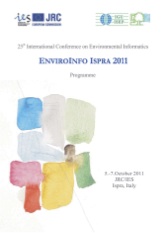Publishing Agro-Environmental Data to a Semantically Unified Environmental Information Space: a Case Study
Abstract
Publishing environmental data to Linked Open Data (LOD) requires environmental data providers to adopt a set of universally recognized linked data principles. These principles enable syntactic integration of the linked data regardless of the data publisher and origin. However, these principles do not provide any mechanism for semantic integration and interoperability of the linked data. In order to turn the linked en- vironmental data into a semantically unified environmental information space, the linked environmental data must be accompanied by conceptualized semantics defined in domain conceptualizations known as domain ontologies. Taking into account the linked data principles and domain ontologies we proposed a set of requirements and a data-publishing workflow for environmental data providers. In this paper we present a case study supporting our approach by delivering: 1) an agro-environmental domain ontology and 2) a supporting software system that realizes the proposed data-publishing workflow. We demonstrate the publishing workflow on publishing some example, agro-environmental resources provided by JRC MARS, which is one of the leading European institutions for monitoring agricultural resources founded by the European Commission.
Download full text in pdf format
 Published as:
Published as:
S. Nesic,
A. E. Rizzoli,
I. N. Athanasiadis,
M. Donatelli,
Publishing Agro-Environmental Data to a Semantically Unified Environmental Information Space: a Case Study,
25th Int'l Conf on Informatics for Environmental Protection (EnviroInfo 2011), vol. 2, pg. 856-867,
2011, Shaker.
You might also enjoy (View all publications)
- Corn yield estimation under extreme climate stress with knowledge-encoded deep learning
- AirCast: Improving air pollution forecasting through multi-variable data alignment
- A virtual lab maturity model for guiding the co-development of advanced virtual research environments
